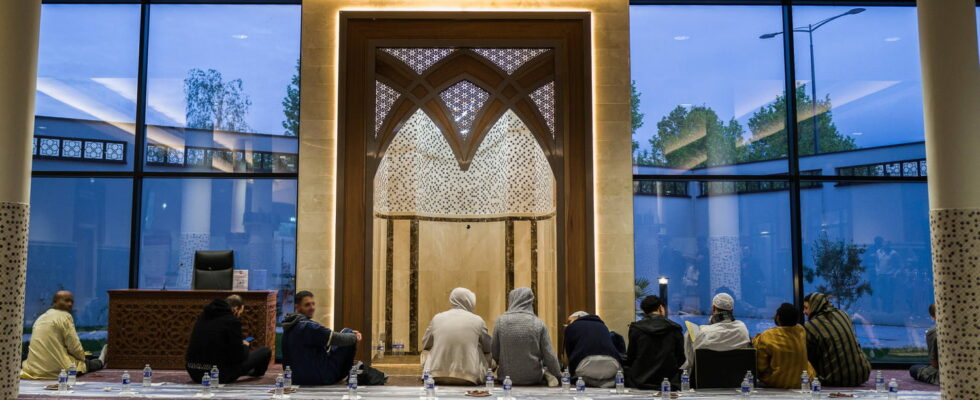Ramadan 2025 is coming to an end for nearly 5 million Muslims in France. The long-awaited party of Eid El-Fitr, marking the break of the fast, is for this weekend according to the CFCM.
Since March 1, millions of Muslims through France have been observing Ramadan fasting, abstaining from eating and drinking from sunrise to sunset. After almost a month of deprivation and meditation, the time has soon come for them to celebrate the end of this period and the return to a normal pace of life. Eid El-Fitr, one of the major festivals of the Muslim calendar, synonymous with festivities and family reunions, is looming.
But on what precise date will the end of Ramadan take place? If the observation of the crescent of the moon, announcing the beginning of a new lunar month, remains a tradition always vivid, the Paris mosque organizing a night of doubt this Saturday evening, many Muslims are now going to astronomical calculations to know in advance on Eid day. And this year, a consensus seems to be emerging within the main bodies representing Islam in France.
Thus, the French Council for Muslim worship (CFCM) and the Muslim theological council of France (CTMF) have already announced that Eid El-Fitr would take place on Sunday, March 30, which means that the last day of Ramadan will indeed be this Saturday, March 29. “The conjunction of the new moon marking the start of the month of Chawwal 1446h will occur on Saturday March 29, 2025 at 11:58 am (Paris time)”, specifies the CFCM in a press release Published Tuesday, adding that “the visibility of the lunar croissant will be possible this same evening in a large part of North America”.
Press release from the French Muslim Culute Council (CFCM) – Eid El -Fitr 1446H Sunday, March 30, 2025
According to astronomical data, the conjunction of the new moon marking the start of the month of Chawwal 1446h will occur on Saturday March 29, 2025 at 11:58 am (Paris time).
– CFCM (@cfcmoffiel) March 25, 2025
Another official announcement for the end of Ramadan and Eid
The CTMF abounds in the same direction, indicating that “the conditions necessary to observe the new Crescent of Chawwâl will be met on Sunday March 30”. If these announcements allow a majority of faithful to organize serenely for the day of celebration, a small part of uncertainty remains until the last moment.
Indeed, the great mosque of Paris, attached to the ancestral custom of “the night of doubt”, will wait this Saturday evening to scrutinize the sky on the lookout for the growing end. If it is visible to the naked eye, then Eid will be confirmed for the next Sunday. Otherwise, if the moon remains invisible, the party would be pushed over 24 hours, on Monday 31. A possible but unlikely scenario, the various bodies watching for several years not to disturb the end of the sacred month among Muslims.
Eid, also called “Eid Es-Seghir” (the little party) as opposed to Eid El-Kébir (the big feast of sacrifice), is the occasion among Muslims to put on its most beautiful clothes, to share a tasty family meals and to distribute gifts or money to children. It is also a moment of generosity and solidarity towards the most deprived, through the payment of the Zakat al-Fitr, a specific alms allowing the poor to take part in the collective celebration.
Eid day traditionally begins with a solemn prayer at the mosque, followed by a breakfast including a date. This fruit, by which the prophet Muhammad broke his fast, has become a symbol of the month of Ramadan. But other emblematic dishes garnish festive tables: oriental pastries such as gazelle horns or baklavas, sugary drinks based on milk or fruit …
